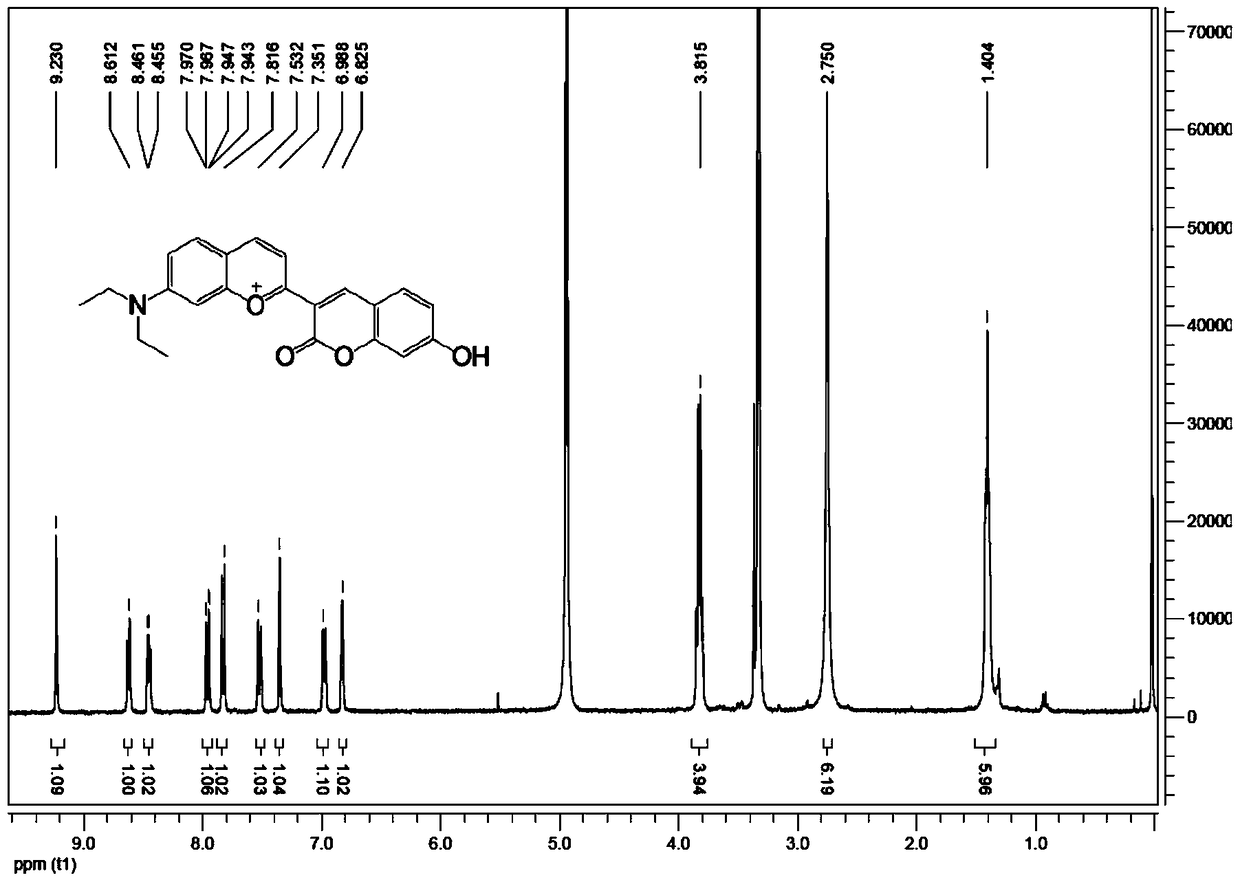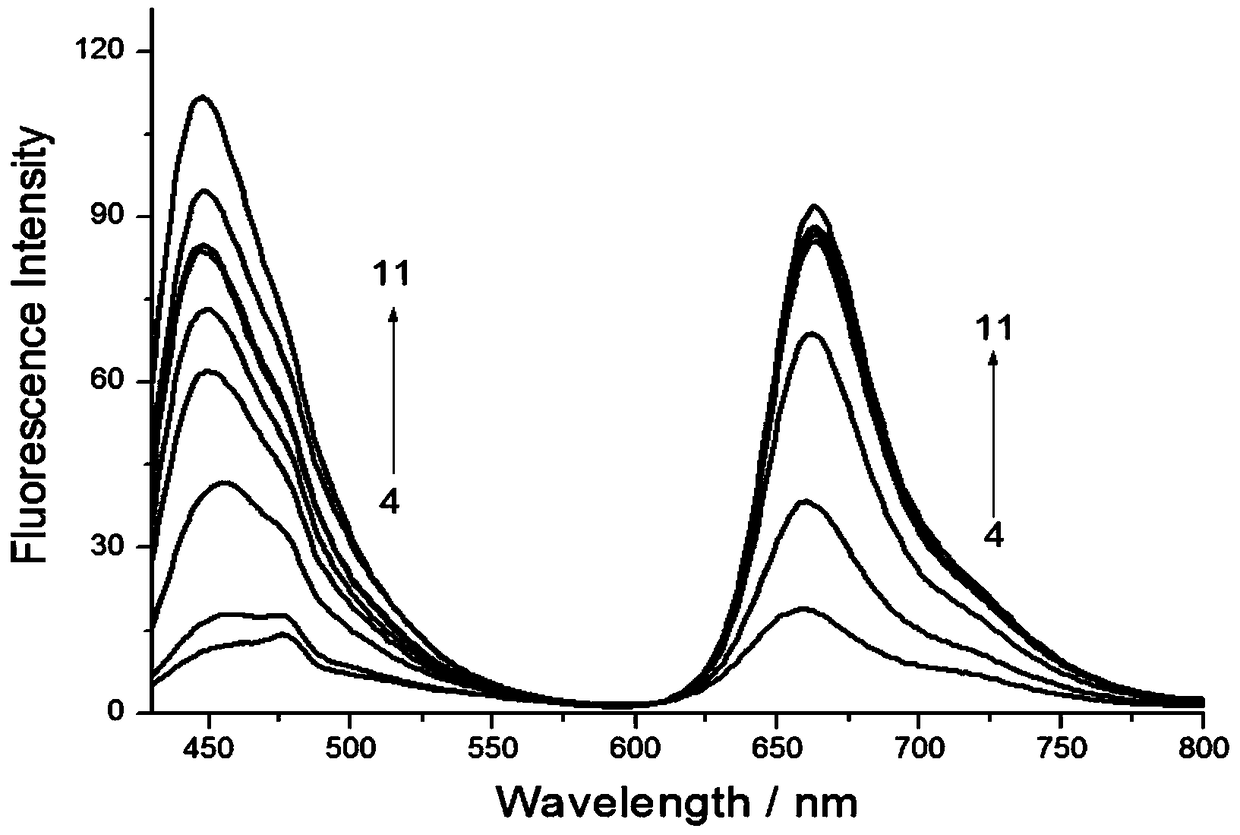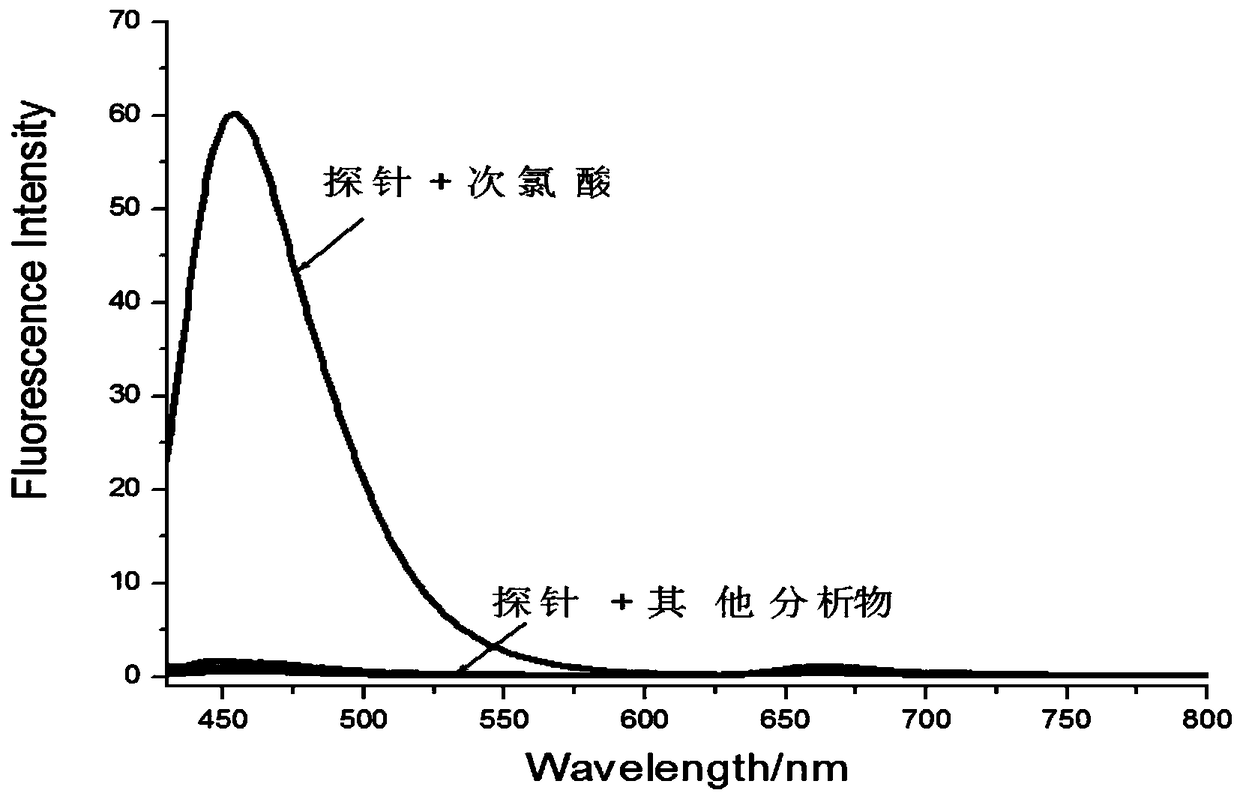A fluorescent probe for detecting hypochlorous acid in biological systems and its application
A technology of fluorescent probe and hypochlorous acid, which is applied in the field of fluorescence analysis, can solve the problems of incomparable and incomparable fluorescence imaging technology, and achieve the effects of good fluorescence emission spectrum characteristics, low preparation cost and simple synthesis process
- Summary
- Abstract
- Description
- Claims
- Application Information
AI Technical Summary
Problems solved by technology
Method used
Image
Examples
Embodiment 1
[0029] Example 1: Preparation of the fluorescent probe 1a for detecting hypochlorous acid in the biological system of the present invention
[0030] Add 3-acetyl-7-hydroxycoumarin (204mg, 10mmol), 4-(diethylamino) salicylaldehyde (193mg, 10mmol) and methanesulfonic acid (5mL) into a 50mL single-necked flask, and reflux for 6 After hours, cool, pour into 10g ice, filter and dry.
[0031] The obtained solid was purified by column chromatography (dichloromethane:methanol=10:1) to obtain 371 mg of dark blue product, which is the fluorescent probe 1a for detecting hypochlorous acid in the biological system of the present invention, with a yield of 67%.
[0032] The above-mentioned fluorescent probe 1a for detecting hypochlorous acid in biological systems 1 H NMR chart see figure 1 .
Embodiment 2
[0033] Example 2: The selectivity of the fluorescent probe 1a for detecting hypochlorous acid in the biological system of the present invention to different substances
[0034] Prepare 8 5mL 5μM probe PBS solutions (containing 5% methanol, p H=7.4) in advance, and then add 50μL of 10mM NaClO and Na respectively to the system. 2 S, Na 2 SO 3 , NO, H 2 O 2 , CH 3 COOOH, HClO 4 , Cys, GSH, NaNO 2 PBS solution of VC, etc. Then perform fluorescence detection (λ Ex =410nm,λ Em =452nm); calculate the fluorescence intensity in each system; evaluate the selectivity of the probe to hypochlorous acid (see image 3 ).
[0035] A similar method is used to analyze the fluorescence spectra of the fluorescent probe 1a for detecting hypochlorous acid in the biological system of the present invention under different pH conditions, and the results are shown in figure 2 .
Embodiment 3
[0036] Example 3: Analysis of the absorption and fluorescence changes of the fluorescent probe 1a for detecting hypochlorous acid in the biological system of the present invention reacting with different concentrations of hypochlorous acid
[0037] Prepare 1 mL of acetonitrile solution with a concentration of 0-1 mM hypochlorous acid, and then add 9 mL of probe PBS solution (containing 5% methanol, pH=7.4) with a concentration of 5 μM. After reacting for 10 minutes, perform absorption spectrum test (see Figure 4 ); perform fluorescence detection (λ Ex =410nm,λ Em =452nm), calculate the fluorescence intensity in each system, and establish a standard curve between fluorescence intensity and hypochlorous acid concentration (see Figure 5 ) To determine the lower limit of the probe for detection of hypochlorous acid.
PUM
 Login to View More
Login to View More Abstract
Description
Claims
Application Information
 Login to View More
Login to View More - R&D
- Intellectual Property
- Life Sciences
- Materials
- Tech Scout
- Unparalleled Data Quality
- Higher Quality Content
- 60% Fewer Hallucinations
Browse by: Latest US Patents, China's latest patents, Technical Efficacy Thesaurus, Application Domain, Technology Topic, Popular Technical Reports.
© 2025 PatSnap. All rights reserved.Legal|Privacy policy|Modern Slavery Act Transparency Statement|Sitemap|About US| Contact US: help@patsnap.com



